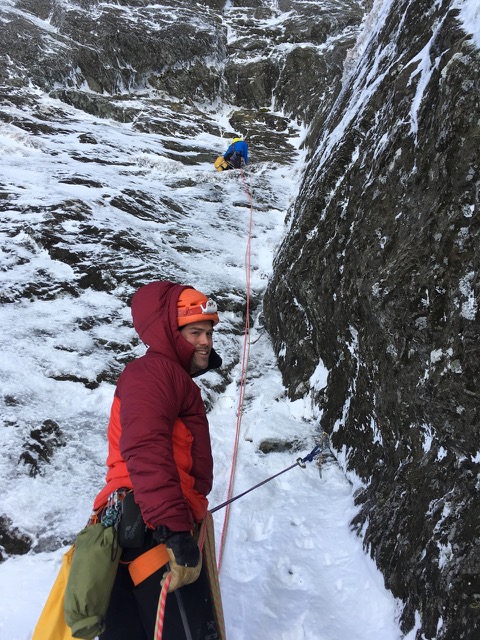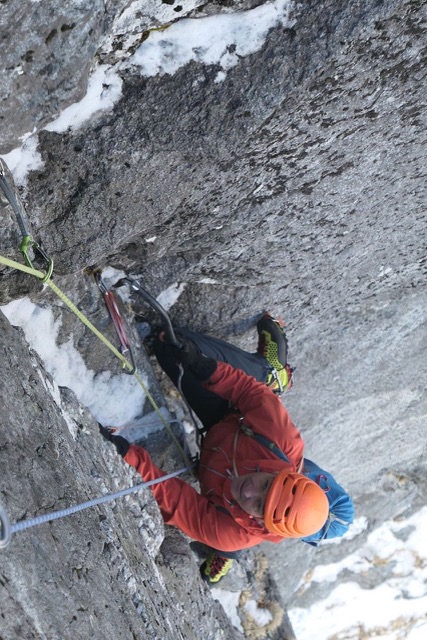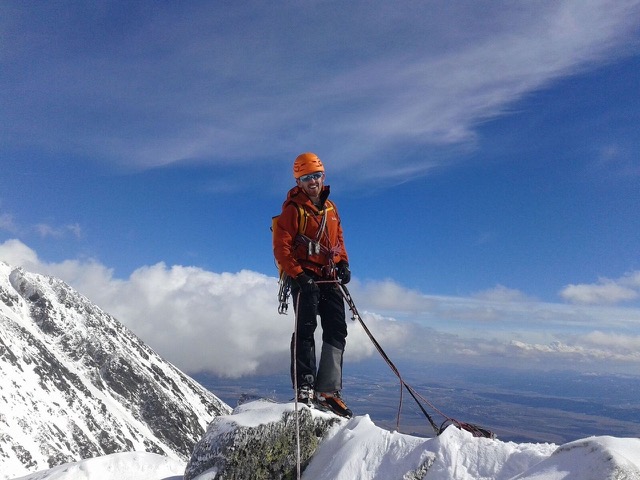
The Alpine Club is working with the BMC to look at ways of helping young, talented British climbers to improve their skills and knowledge about expedition climbing. This group is known by various names including the ‘Young Alpinists’ and will hopefully transform in the near future into a revitalised Alpine Climbing Group within the Alpine Club. I have been willingly roped in to process to act as an expedition mentor for anyone willing to listen to the ‘Old Bloke’.
Recently the Alpine Club received an offer from the Polish Mountaineering Association to participate in a British - Polish exchange for young mountaineers reminiscent of those carried out in the 1970s-90s, which lead on to some truly great expeditions. This seemed like an ideal opportunity for a team of volunteers from the Young Alpinist to experience the Polish way of doing things, share experiences and ideas and hopefully create some expedition plans together.

The Scottish leg took place in February 2018 with the return leg to the Polish Tatra taking place in March 2018
The Polish team consisted of:
Wadim Jablonski
Michal Czech
Kuba Kokowski
Damian Bielecki
Wytek Tavanowski (only in Scotland)
Karol Lejuszewski (only in Poland)
Martin Janecek (only in Poland)
The British Team consisted of:
Tim Miller
Richard Kendrick
Tim Oliver
Alfie Maun
Paul Ramsden
Ian Parnel (only in Scotland)

The Scottish visit organized by Ian Parnell was based in the marvelous Black Rock cottage hut below the Buachaille. Unfortunately, the week was marred by persistent heavy snowfall and severe avalanche conditions. The team failed to even get out of the hut on one day until the snow plough had cleared the road to the ski lifts. The conditions made it impossible to get out on the Ben, which was disappointing for the Poles and many of the Glencoe classics were either buried in snow or too dangerous to get to. In the end the team were forced to focus on the Bridge of Orchy crags for much of the week.
Routes climbed included: Messiah, Promised Land, Manage a Tois, Pas de Deux, Deadman’s Grooves, North Wall Groove, Agag’s Groove, Central Grooves etc. I think in the end the Poles were very impressed with the unique Scottish conditions and climbing style.
The return leg to the Polish Tatra was organized by members of the Krakow University Mountaineering Club, which appears to be one of the most active branches of the Polish Mountaineering Association. A big thank you goes out to Wadim Jablonski for putting in a lot of work on this. The meet was based at the Morskie Oko hut and we were blessed by the national park authorities who granting us a driving permit to the hut. Unfortunately, the weather treated us to a repeat of our Scottish experience with heavy snow, rain and high avalanche potential on most days of the trip. However good local knowledge and the ability to move between valleys, even into Slovakia, thanks to the driving permit meant that routes were climbed most days including first winter ascents, rare winter repeats and classic as well as epic mountain outings. The Brits were very impressed by the scale of the routes and the quality of the climbing which generally follow good crack and corner lines on good quality granite with ample amounts of turf.

Routes climbed included the Miekkie Ruchy, Czarne Zaciecie, Szare Zaciecie, Starek-Uchmanski, and Prawy Dziadek routes on the Czolowka Miegusza. The Czulka-Weincziller and Puskasowa Rebro routes on Tupa and the Stanislowski route on Many Kiezmarski.
Obviously, I missed something in translation, but everyone was very amused with my ascent of what turned out to be Left Hand Grandfather Route followed by Right Hand Grandfather Route! Two of the highlights of the trip was Richards Kendrick’s free ascent of the Black Deidre at M8, possible the first time it had been climbed in winter without rock shoes! And Tim Miller’s twenty-eight-hour epic outing on the Stanislowski route.
On the last night in Krakow I gave a presentation to the University Mountaineering Club which was well received and finished off with much drinking and dancing into the early hour’s. We all agreed it had been a superb exchange, despite the terrible weather at both ends and most importantly new climbing partnerships had been forged and plans are underway for a joint expedition to the Himalaya in 2019.

